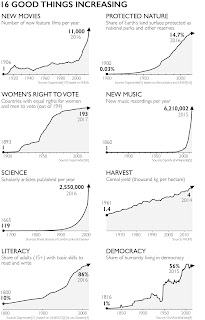Sng, O., Neuberg, S. L., Varnum, M. E. W., & Kenrick, D. T. (2018). The behavioral ecology of cultural psychological variation. Psychological Review. http://dx.doi.org/10.1037/rev0000104
Abstract: Recent work has documented a wide range of important psychological differences across societies. Multiple explanations have been offered for why such differences exist, including historical philosophies, subsistence methods, social mobility, social class, climactic stresses, and religion. With the growing body of theory and data, there is an emerging need for an organizing framework. We propose here that a behavioral ecological perspective, particularly the idea of adaptive phenotypic plasticity, can provide an overarching framework for thinking about psychological variation across cultures and societies. We focus on how societies vary as a function of six important ecological dimensions: density, relatedness, sex ratio, mortality likelihood, resources, and disease. This framework can: (a) highlight new areas of research, (b) integrate and ground existing cultural psychological explanations, (c) integrate research on variation across human societies with research on parallel variations in other animal species, (d) provide a way for thinking about multiple levels of culture and cultural change, and (e) facilitate the creation of an ecological taxonomy of societies, from which one can derive specific predictions about cultural differences and similarities. Finally, we discuss the relationships between the current framework and existing perspectives.
---
Human parallels and predictions.Sex ratio has a direct ecological parallel in human societies, and is defined in a similar way (e.g., Secord, 1983). There is considerable variation in sex ratio across societies. For instance, at the country level, Russia has a sex ratio of .86 (i.e., 86 males for every 100 females), whereas Kuwait.s sex ratio is 1.43 (Central Intelligence Agency, 2013). Tracking behavioral ecological work, research on the effects of sex ratio on psychological variation across societies and cultures has focused on mating dynamics. Notably, variation in sex ratio within the U.S. has been found to predict differences in inclinations towards monogamy: male-biased populations exhibit lower divorce rates and greater male parental investment (Pedersen, 1991), and higher proportions of young adult men who are married (Kruger & Schlemmer, 2009). Similarly, in hunter-gatherer groups, more male-biased sex ratios are also associated with lower divorce rates (Blurton-Jones et al., 2000) and greater paternal investment (Marlowe, 1999). More recent work has also examined how sex ratio, across nations, influences whether individuals are oriented towards more short-term or long-term mating relationships (Schmitt, 2005). In general, under male-biased sex ratios, one sees greater monogamy and tendencies towards long-term mating (Gutentag & Secord, 1983). This reflects the greater intrasexual competition men face in male-biased ecologies, and hence the need to respond by attempting to match female preferences for long-term mating relationships. Experimental work that situationally manipulates perceived sex ratios finds a similar pattern, with males shifting towards greater long-term mating orientations under male-biased sex ratios, and females shifting towards greater short-term mating orientations under female-biased sex ratios (females face greater intrasexual competition in the latter context, hence the shift towards a mating orientation that would appear more attractive to males) (Moss & Maner, 2016).
A number of aspects of marital arrangements also appear to be linked to sex ratios (Pollet & Nettle, 2007). In Uganda, polygyny (one man marrying multiple women) is more common in areas with more women, and as the number of men increases, wealthy men are more likely to have multiple wives, and poor men none (Pollet & Nettle, 2009). In China, sex ratios are becoming increasingly skewed (due to selective abortion of female fetuses), and there was by 2006 a surplus of 40 million single men (Chan, Blyth, & Chan, 2006). At the same time, the practice of bride price has been increasing in China. In some areas, there has been a fourfold increase in bride price, and half of the men living in rural areas can no longer afford a bride. In Vietnam, men are finding it more difficult to find wives, as men from other countries, with shortages of women, are paying increasingly large sums of bride price to marry Vietnamese women (Belanger & Linh, 2011).
Other indirect effects of changing situational sex ratios have been found, with male-biased sex ratios leading men to increase their spending behaviors for objects that display their wealth and resources (Griskevicius et al., 2012). Such behaviors presumably reflect similarly greater male-male competition in displaying financial resources to potential mates. Given that male-male competition is more likely to involve physical aggression, one might also predict that in societies with male-biased sex ratios that one would observe higher rates of violence. This appears to be the case, as countries that have more male-biased sex ratios have higher rates of homicide and other violent crimes (Barber, 2003; Dreze & Keher, 2000; Hudson & Den Boer, 2002). Female-biased sex ratios, on the other hand, lead women to be more career-driven (Durante et al., 2012), with such a shift ostensibly occurring because of the greater difficulty females face in finding a long-term investing partner when men are scarce. Finally, both men and women have been found to adopt more risky financial investment behaviors under more unfavorable sex ratios (i.e., more individuals of the same sex) (Ackerman, Maner & Carpenter, 2016).
Nonetheless, there is still much to be explored in terms of sex ratio.s role in explaining psychological variation across societies and cultures. One possibility is that operational sex ratios may shape the nature of xenophobia and outgroup prejudice. In societies with a strong sex-ratio bias, one might predict greater between-group prejudice, but specifically between members of the over-prevalent sex. For example, whereas males generally hold stronger outgroup prejudices than females (McDonald, Navarrete, & Van Vugt, 2012), and especially against outgroup men, one might predict that women might hold especially strong prejudices against outgroup women within societies with a female-biased sex ratio, as those outgroup women pose mating competition in an already female-competitive ecology. Such a perspective could lend unique insights into cross-society variation in intergroup conflict, and what the specific structure of such conflicts might be.






